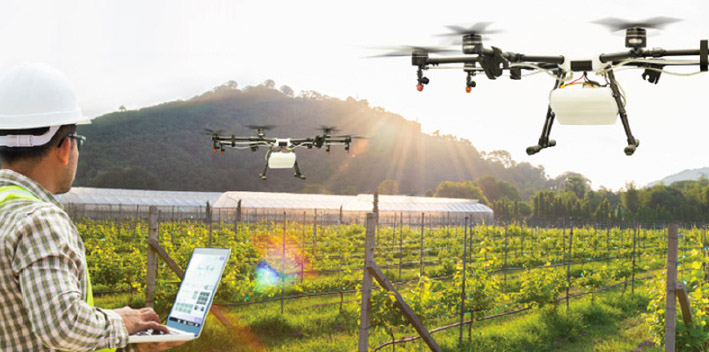smart farming
Smart Farming is the application of modern Information and Communication Technologies (ICT) into agriculture, such as:
Multispectral mapping with UAV’s and drones, Satellite analysis, Robots, IoT Sensors (ex. weather stations), Big Data, GPS, etc.
SMART FARMING SYSTEM FOR INTEGRATED AGRICULTURAL MANAGEMENT
Multispectral mapping with UAV’s, Robots, Satellite. Air and Ground sensors
- PANTHEON EU Project: Hazelnut plantation management with Ferrero partner.
- Lazio: Peaches and Wine
- Ecuador: Banana plantation
- East Asia: Tropical fruit.
Smart Farming Solution of ATEN IS Group
- Agronomic Modeling with multisensors – multiplatform data
- Artificial Intelligence and Machine Learning
- Decision Support (remote/local) Centers
- Satellite, Drones, Robots, Meteo data

BENEFITS OF SMART FARMING
ECONOMIC BENEFITS
- Reduction of machinery, maintenance, fuel and lubricant costs by up to -60%
- Reduction of labor costs up to -25%
- Reduction of fertilizer costs up to -20%
- Reduction of pesticide and insecticide costs by up to -30%
- Reduction of water consumption and irrigation costs up to -25%
- Increase productivity up to + 20%
- Increase gross income up to + 20%
- Increase profit up to + 30%
MANAGEMENT AND OPERATIONAL BENEFITS
- Simplification and improvement of business management and decision support
- Simplification of company compliance with biological, health and quality certifications and regulations
- Simplification and optimization of the logistics management of agricultural machinery
- Improvement of soil knowledge and its agronomic characteristics
- Accurate crop estimation and maximization yields in all soil sectors
- Accurate weather and wind forecasts
- Reduction of man/hours of work, stress and physical load for manual operations
ENVIRONMENTAL BENEFITS
- Improvement of physical and organic soil quality
- Production quality improvement
- Elimination of infesting plants (weeds)
- Reduction of waste of water, fertilizers, fertilizers and pesticides
- Reduction of harmful emissions, environmental impact and health risks
- Reduction and prevention of crop diseases and rapid identification of diseased plants
- Preservation and improvement of biodiversity

